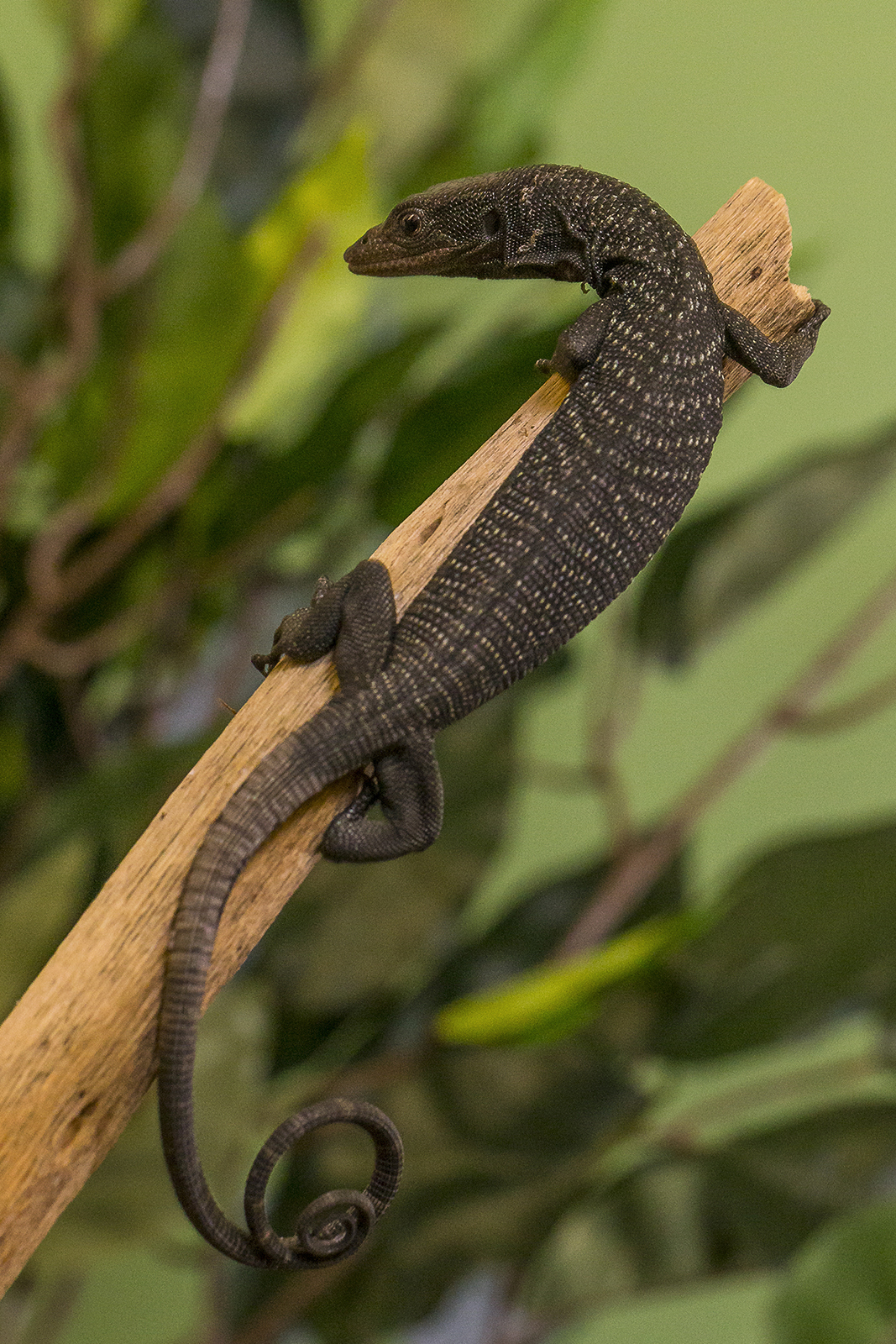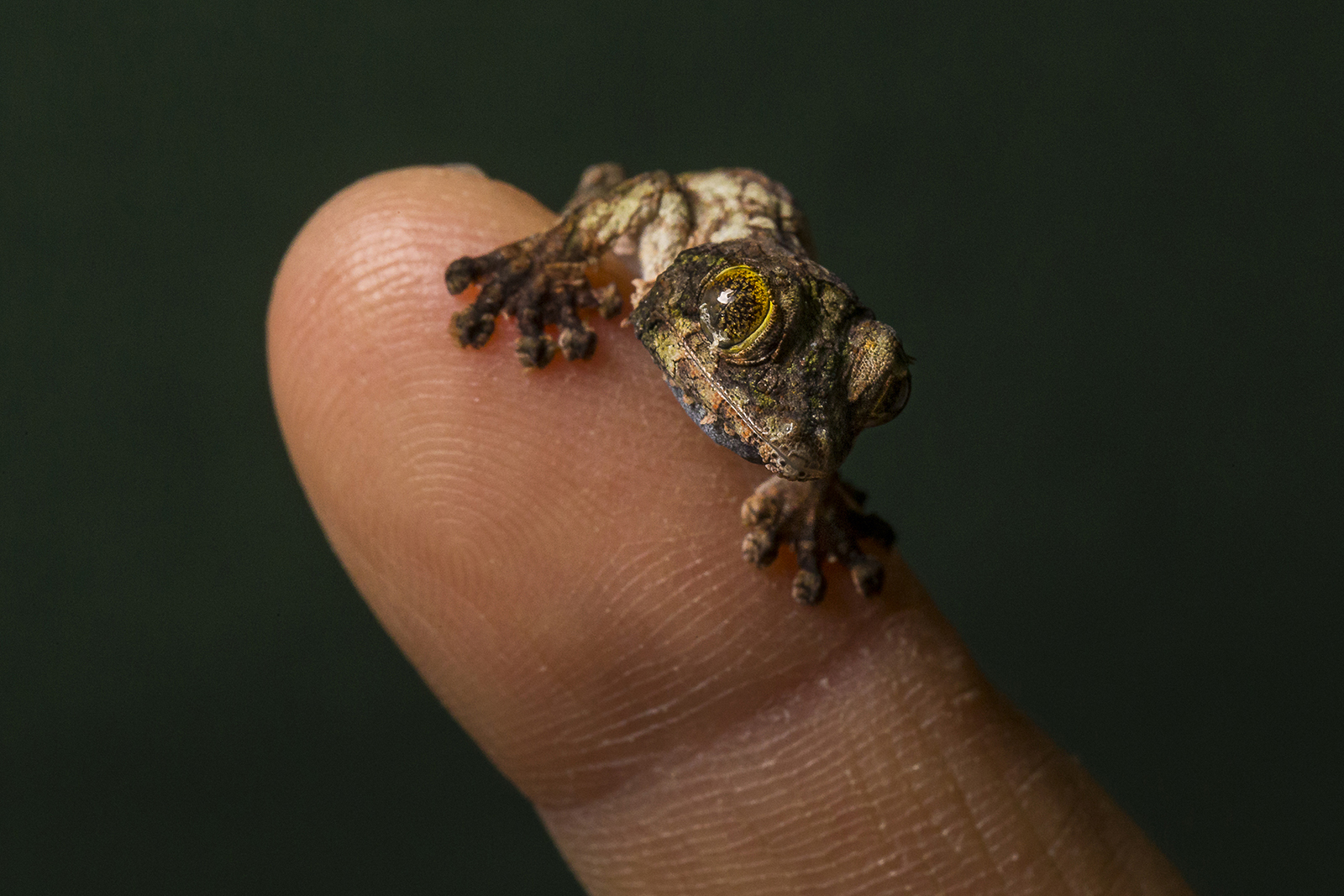First-ever Black Tree Monitor Hatchlings and Rare Leaf-impersonating Gecko Hatchlings Represent Milestones for the San Diego Zoo
Two rare reptile species native to two delicate island ecosystems—the black tree monitor, native to the Aru Islands off the coast of Papua New Guinea; and the mossy leaf-tailed gecko, native to Madagascar—are now thriving at the San Diego Zoo. The latest milestones in a long history of successful reptile breeding, the new arrivals offer hope for two little-known, yet important species.
The Zoo, previously home to two adult black tree monitors, is now also home to four babies that hatched from eggs laid in January. This is the first time the species has hatched at the San Diego Zoo, kicking off what the Zoo hopes will be a robust breeding program. The young monitors weigh about two-fifths of an ounce (11 grams) each, and are doing well.

Black tree monitor
“We’re thrilled to have black tree monitor hatchlings this year, as this is the first time they’ve successfully reproduced at the San Diego Zoo,” said Dave Grubaugh, reptile keeper at the San Diego Zoo. “The parents have been with us for three years now, and we’ve just been patiently waiting for them to reach maturity and bond with each other. They are one part of a larger, fragile ecosystem where every piece is important.”
Black tree monitors live in the hot, humid forests and mangrove swamps of the Aru Islands off the coast of Papua New Guinea. They are dependent on the forest canopy to survive, but most of the regional forest on the Aru Islands has already been lost. Other threats to the species include the pet trade and non-native predators, such as foxes and cats. With the threats the black tree monitor faces in the wild, establishing insurance populations in accredited Zoos will help ensure the survival of the species.
Another reptile species that faces similar challenges in the wild, and has also experienced recent breeding success at the Zoo, is the mossy leaf-tailed gecko. The Zoo received a confiscated group of mossy leaf-tailed geckos in 2010. The geckos have since produced eight hatchlings, with several generations now thriving at the Zoo.

Mossy leaf-tailed gecko
All leaf-tailed gecko species are popular in the pet trade, perhaps due to their unique adaptations. Leaf-tailed geckos have evolved to resemble leaves, blending into their forest surroundings to avoid predators and better ambush their insect prey. However, more than 80 percent of Madagascar’s forests have been decimated by logging, agriculture, housing development and other human activity, threatening the future of the species. With these ongoing threats, keeping healthy satellite populations outside of Madagascar is increasingly important as a safeguard against extinction.
Bringing species back from the brink of extinction is the goal of San Diego Zoo Global. As a leader in conservation, the work of San Diego Zoo Global includes on-site wildlife conservation efforts (representing both plants and animals) at the San Diego Zoo, San Diego Zoo Safari Park, and San Diego Zoo Institute for Conservation Research, as well as international field programs on six continents. The work of these entities is inspiring children through the San Diego Zoo Kids network, reaching out through the internet and in children’s hospitals nationwide. The work of San Diego Zoo Global is made possible by the San Diego Zoo Global Wildlife Conservancy and is supported in part by the Foundation of San Diego Zoo Global.





